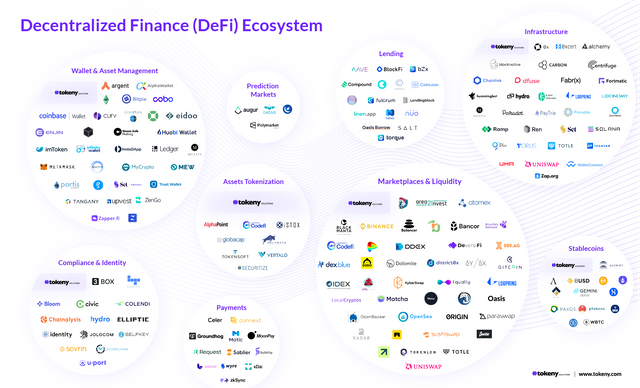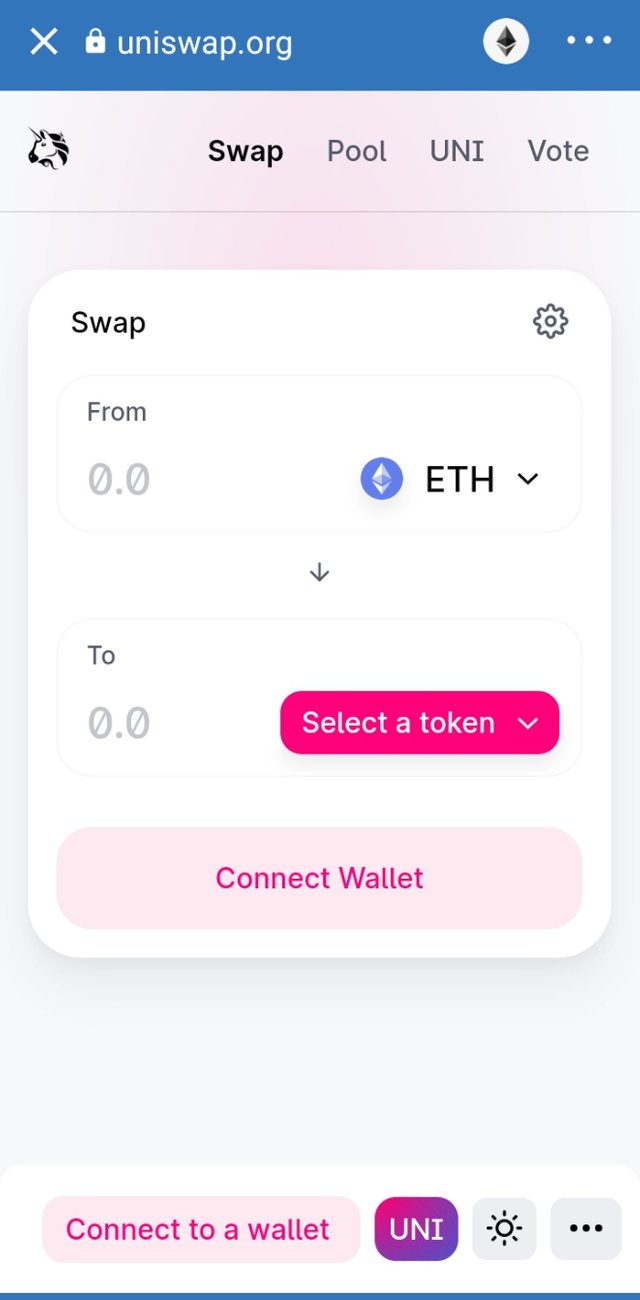CRYPTO ACADEMY WEEK 7 HOMEWORK POST FOR @gbenga : Introduction to Defi and Yield Farming||
Hello Steemians,
Welcome to Steem Crypto Academy Week 7.
Talking of DeFi, the joy and condition for accessing this decentralized financial system (DeFi) is an Internet connection, which greatly simplifies the process of participation, reduces costs, reduces the possibilities for censorship and manipulation by centralized organizations that own and control infrastructure underlying existing financial markets. Before we go far.
What is a Decentralized Financial Ecosystem?
The very idea of decentralized finance is still in its infancy. Yes, this is a young and promising industry that someday (if possible) will be able to supplant the currently existing outdated financial systems. But to do this, it must at least overcome several major obstacles. Such as creating a seamless user experience and meeting industry security standards to the fullest
DeFi is an umbrella term for a range of technologies and products that offer people innovative offline financial management capabilities. And, most importantly, without the control of a central bank or other regulators.
Decentralized Applications - DApps are usually built on top of existing blockchains such as Bitcoin, EOS, or Ethereum. Most often, they use smart contract technology, which gives the user full control over their financial assets. Moreover, this applies not only to storage, investments, and regular payments but also to other areas of human activity - loans, insurance, margin trading, forecast markets, and much more.
Key benefits of a decentralized financial system
- Accessibility for any user, regardless of his geographic location, credit history, and other restrictions that exist in the centralized financial system.
- Transparency in all blockchain transactions. Furthermore, all smart contracts are open source that can be audited for potential vulnerabilities easily.
- Flexibility of the software interface - the user can use any convenient interface offered by third-party developers or created independently.
- Openness (Permissionless) allows users to interact directly with applications through browser extensions (or software wallets) and also provides the ability to create their own applications.
- Interoperability provides tremendous opportunities to combine new DeFi apps with existing services (like Lego) that interact with each other through universal protocols and can be combined to create completely new products.
The main directions of development for DeFi
- Decentralized loan services which enable users to loan and borrow cryptographic assets. The loan provides a new way of earning free assets interest.
- Decentralized exchangers - provide users with the ability to exchange cryptocurrencies without the participation of centralized exchanges.
- Stablecoins - the issue of cryptocurrencies with a fixed price pegged to a unit of fiat currency (usually USD) backed by fiat currencies, decentralized cryptocurrencies (BTC, ETH), and other valuable assets in order to minimize volatility.
- Synthetic crypto assets - the creation of derivative financial instruments (derivatives) on the blockchain.
- Tokenized Assets - management of user funds by distributing them to various pools of liquidity (balancing deposits) in order to maximize profit.
- Smart Wallets - DeFi portfolio wallets and managers with advanced management features.
- Payments are decentralized payment protocols.
- Decentralized insurance - minimization of risks when storing assets in the event of an error in a smart contract or other unforeseen circumstances.
Risks associated with DeFi
Risks associated with smart contracts. Due to the fact that in such systems, various protocols constantly interact with each other, it becomes obvious that in the event of a critical error in one of the protocols, a smart contract, as a completely autonomous executable program code, significantly aggravates the risk and can lead to vulnerability of the entire system.
Regulatory risks. While, according to the very concept of DeFi, it is assumed that the system should be completely decentralized, in reality, not all DeFi services have fully decentralized management, and theoretically, the possibility of lawsuits against the creators of applications is not excluded. However, there are still no such precedents.
Uniswap as one of Project/Protocol in the DeFi Ecosystem.
The decentralized application of Uniswap is designed to swap one token directly for another, bypassing commercial platforms and other intermediaries, and resistance to censorship
Uniswap is an open-source, decentralized exchange protocol built on the Ethereum blockchain and operated by smart contracts.
It is an automated liquidity protocol because there is no order book or any centralized party required to execute trades.
But how do you trade without an order book?
Well, Uniswap works with a model in which liquidity providers create pools of liquidity. This system provides a decentralized pricing mechanism that is analogous to "flattening" the depth of the order book on classic centralized exchanges.
Since the Uniswap protocol is decentralized, there is no listing either. In fact, any ERC-20 token is allowed to trade if a liquidity pool is available to traders.
Therefore, Uniswap does not charge any listing fees, and, in a sense, the protocol acts as a kind of "public good."
How it works
Uniswap leaves behind the traditional digital exchange architecture as there is no order book - the protocol works with the Constant Product Market Maker design, which is a variant of the Automated Market Maker (AMM) model.
Reserves are funded by liquidity providers, and liquidity reserves are controlled by Automated market makers.
Conclusion
the world needs decentralization more than ever, and people realize the importance of creating a reliable infrastructure for a decentralized economy that can provide much more efficiency, flexibility, and self-government than the traditional financial and economic model.
Thanks for read my post.
Special thanks to Prof @gbenga for his lecture. It is a very interesting topic



Thanks for being a part of my class and for participating in this week's assignment. I hope you learned from the class as the aim of the school is to teach and allow people to learn alongside.
Remark
Direct Copy-pasting is regarded as plagiarism and it isn't accepted on steemit. I found similar content with your post here.
Your content
Similar content
Dear Prof @gbenga, I am so sorry for the little percentage of plagiarism in my content, However, I have corrected it, and I hope you'll review it again soonest